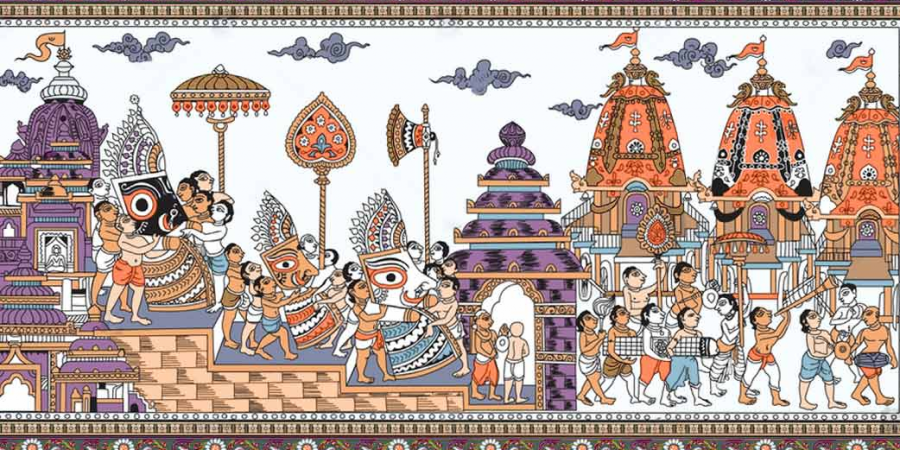

Pattachitra painting is a traditional art form that originated in the state of Odisha in eastern India. The word "Pattachitra" is derived from two Sanskrit words, "Patta" meaning cloth or canvas, and "Chitra" meaning picture or painting. The art form is characterized by intricate details, vibrant colors, and mythological themes. Here is a brief history and an overview of the specialities of Pattachitra painting:
History:
Ancient Roots: Pattachitra has a rich history dating back to ancient times. The art form has its roots in the religious and cultural traditions of Odisha. Early Pattachitra paintings were created on cloth or palm leaves and often depicted stories from Hindu mythology.

Religious Significance: Pattachitra paintings have been closely associated with the Jagannath Temple in Puri, Odisha. The artists, known as chitrakars, were traditionally engaged in creating these paintings as a part of the rituals and festivities surrounding the temple.
Traditional Apprenticeship: The art of Pattachitra was traditionally passed down from generation to generation within families. Young artists would undergo a rigorous apprenticeship under experienced masters to learn the intricate techniques and themes associated with Pattachitra.
Invention Specialties:
Canvas and Base: Pattachitra paintings are typically created on cloth or specially prepared canvas made from old, dried palm leaves. The surface is treated with a mixture of chalk and tamarind seed paste to create a smooth texture that allows for intricate detailing.
Natural Colors: One of the distinctive features of Pattachitra is the use of natural colors derived from minerals, vegetables, and other natural sources. Artists prepare their colors using materials like conch shells for white, lamp soot for black, and various plants and minerals for other colors.
Fine Detailing: Pattachitra is known for its meticulous detailing. Artists use fine brushes made from animal hair to create intricate patterns, especially in depicting traditional motifs, jewelry, and clothing. The attention to detail extends to facial expressions and postures of the characters.
Mythological Themes: Pattachitra paintings often revolve around themes from Hindu mythology, depicting stories from epics like the Ramayana, Mahabharata, and Puranas. The artists skillfully narrate these tales through vibrant colors and detailed compositions.
Iconography: The art form follows a set of prescribed iconographic conventions. There are specific ways to depict gods, goddesses, and other mythological characters. This adherence to tradition contributes to the distinctive visual language of Pattachitra.
Borders and Frames: Pattachitra paintings are usually framed by intricate borders that enhance the overall aesthetic appeal. These borders often incorporate geometric patterns and traditional motifs, adding to the visual richness of the artwork.
Pattachitra painting continues to thrive as a cherished art form, blending tradition with contemporary influences. Today, artists may adapt the style to depict a broader range of subjects while preserving the essence of this ancient Indian art form.
